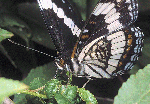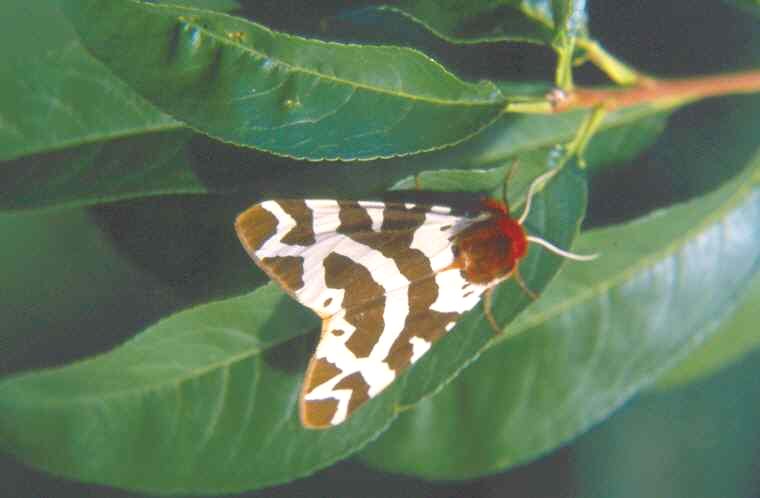
Utah Lepidopterists' Society
Founded 6 Nov 1976

|
|
Utah Lepidopterists' Society Founded 6 Nov 1976 |
|
| History | Mission | Meetings | Bulletin | Checklists | Links | Community | Field Trips | Habitat | Members | Kids | Contact Us |
Papilio zelicaon nitra
Anise Swallowtail
Diagnosis:
The anise swallowtail in Utah consists of the extremely common yellow form gothica as well as the rare black form nitra. The question has arisen in Colorado populations if the black form is the result of introgression with Papilio polyxenes asterius. In Utah, the few captures of the nitra phenotype seem to be in relative close proximity to populations of Papilio bairdi or its larval hostplant Artemisia dracunculus. This suggests the possibility that the dark form in Utah examples may be the result of past hybridization with P. bairdi form bairdi. However, this hypothesis is only based on the author's limited knowledge of Utah nitra records; and has yet to be proven.
General:
The type locality of Papilio zelicaon nitra is Judith Mountains, Fergus County, Montana; W. H. Edwards, 1883. John Masters wrote, "F. M. Brown designated a lectotype to establish the type locality of Papilio nitra Edwards. The lectotype is a male specimen from the original Edwards collection and is now in the Carnegie Museum."
Rocky Mountain populations of Papilio zelicaon for years were considered subspecies gothica; Remington, 1968. However, since it has been shown that the yellow and black morphs represent polymorphic forms of the same species, and since Edwards' description predates Remmington, the subspecies name nitra is used here; even though the nitra phenotype is far less common than gothica.
Utah Distribution and Habitat:
In Utah, P. zelicaon flies in montane habitats where males hilltop in search of females. Populations are univoltine and can be found in Utah's West Desert, Basin and Range Province, Wasatch Range, Uinta Range, as well as the western limits of the San Rafael Swell in Ferron Canyon. Populations of the butterfly are rare or absent in Washington County where it is replaced by Papilio coloro. The butterfly can be found during the spring months of April and May at elevations of roughly 5000 to 6000 feet and can also be found in June and July at higher elevations. (Papilio zelicaon males can be found flying sympatric with Oeneis melissa lucilla amongst the talus boulders at 11,000 feet at the vicinity of Leidy Peak, Duchesne County.)
Bionomics:
P. zelicaon nitra uses a wide variety of parsleys throughout its range in Utah. Females oviposit on the ventral side of the leaf or on inflorescens. Young instars are dark with a slender light saddle. Last instars are green with black stripes. The distribution of zelicaon is far more widespread as compared to Papilio indra as its larvae will utilize far more species of Apiaceae. Mature larvae of P. zelicaon can be found more conspicuously resting towards the top of its host; whereas those of indra tend to rest concealed at the base of the host or off the plant altogether. Larvae of P. zelicaon are far more tolerant of lab rearing negligence as compared to indra. (Those, including kids, who are interested in a short write-up on how to raise this butterfly are encouraged to click here.)
All images of Limenitis weidemeyeri on the ULS Info Bar courtesy Jay Cossey